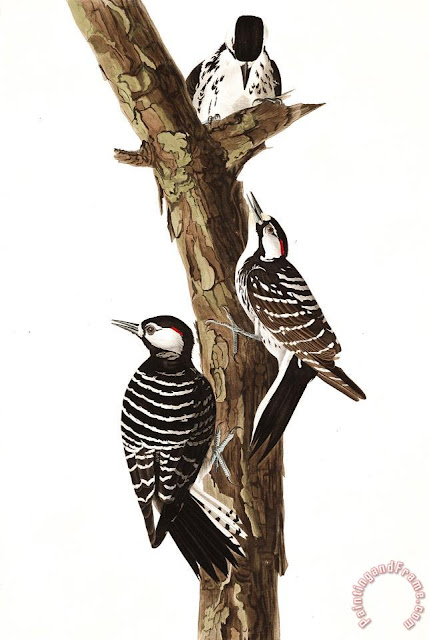As part of Florida's Fish and Wildlife Conservation Commission's (FWC) 75th Anniversary Celebration, a biologist guided birding field trip was held at the Babcock-Webb WMA in Punta Gorda. It began with a pre-dawn rendezvous and a van ride to a Red-cockaded Woodpecker colony....hopefully to see these rare and endangered bird leave their night roosting cavities.
 |
Wikipedia Photo
The Red-cockaded Woodpecker (Picoides borealis) is a habitat specialist in our rapidly diminishing southern pine forests.
|
It was a cool and very foggy dawn in the pines.....
World hushed in silence
Birds unable to keep still…
The chorus of dawn
a Haiku by Helen Manassian Ghali
Birds unable to keep still…
The chorus of dawn
a Haiku by Helen Manassian Ghali
Slash pine (Pinus elliottii) forest is one of several habitats at "The Webb," but certainly the most intriguing on a foggy morning.
Four biologists, 16 enthusiasts, and a million dollar's worth of cameras and optics! Very, very "birdy."
Getting light....bird peeping out...it seems curious about all the activity. Small bird....will leave the roost in a flash and go off foraging for a breakfast of ants and beetles.
Patience....tripod, monopod....and more patience.
Peek a Boo....through the misty fog.
We were watching an artificial cavity....as one of the biologists had seen a bird enter it last evening. There are several colonies of RCWs at the Webb...lots of natural cavities and some improved by the studying biologists.
Not the best photo day for me....below is a post I did last May (2016) during nesting season. The birds were feeding young and stayed close-by while foraging.
Want to know more about the Red-cockaded Woodpecker? You can get a copy of McFarlane's book on Amazon.com for a penny and postage.
Audubon painting of RCW. Binomial naming was by Louis Jean Pierre Vieillot in 1809.
You can visit this RCW colony....just off the Oil Well Grade at the Babcock-Webb WMA.
Many thanks to Florida's WMA biologists who were knowledgeable, friendly and provided a great outing for us "birders."



























